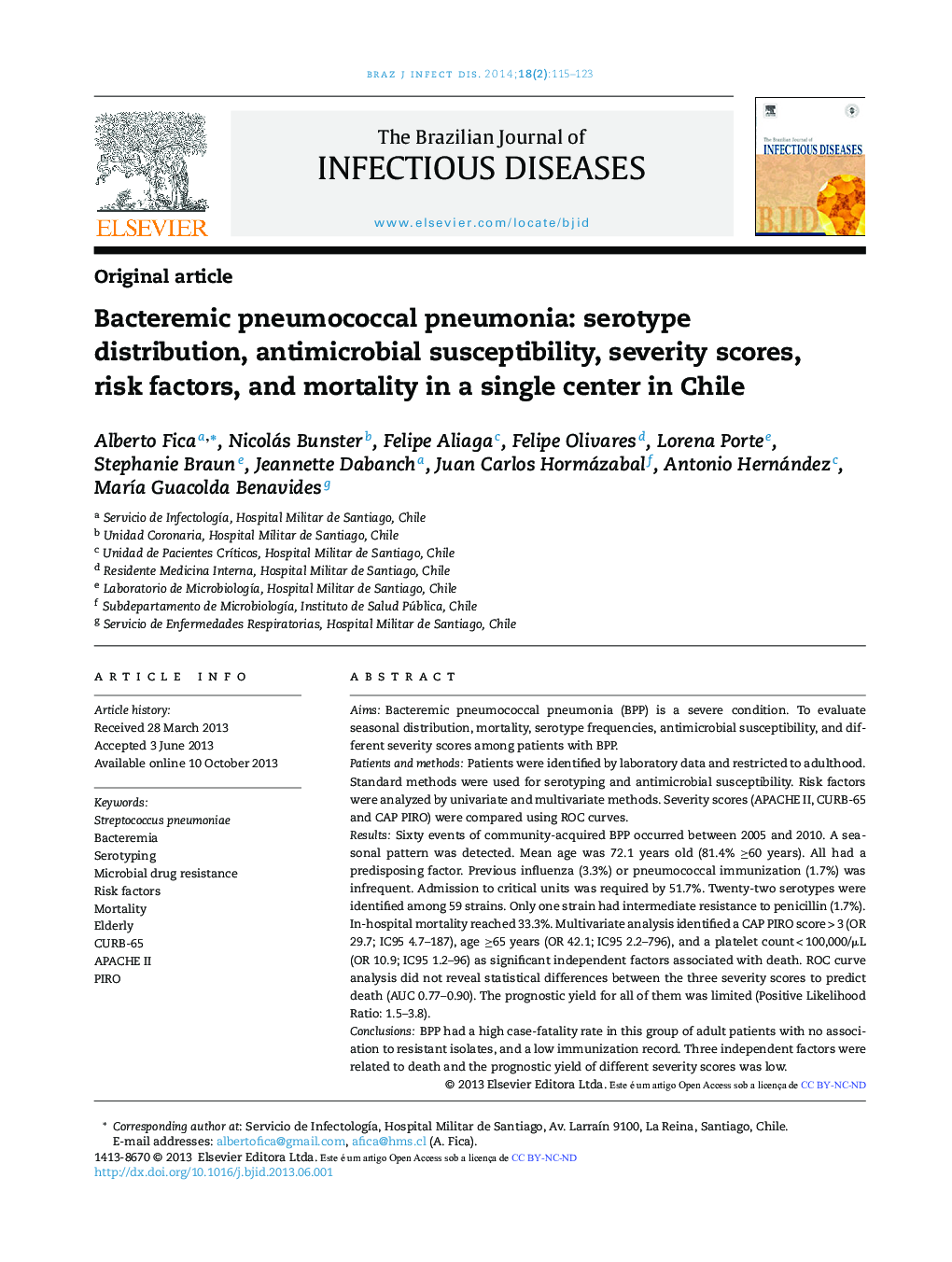| Article ID | Journal | Published Year | Pages | File Type |
|---|---|---|---|---|
| 3344245 | The Brazilian Journal of Infectious Diseases | 2014 | 9 Pages |
AimsBacteremic pneumococcal pneumonia (BPP) is a severe condition. To evaluate seasonal distribution, mortality, serotype frequencies, antimicrobial susceptibility, and different severity scores among patients with BPP.Patients and methodsPatients were identified by laboratory data and restricted to adulthood. Standard methods were used for serotyping and antimicrobial susceptibility. Risk factors were analyzed by univariate and multivariate methods. Severity scores (APACHE II, CURB-65 and CAP PIRO) were compared using ROC curves.ResultsSixty events of community-acquired BPP occurred between 2005 and 2010. A seasonal pattern was detected. Mean age was 72.1 years old (81.4% ≥60 years). All had a predisposing factor. Previous influenza (3.3%) or pneumococcal immunization (1.7%) was infrequent. Admission to critical units was required by 51.7%. Twenty-two serotypes were identified among 59 strains. Only one strain had intermediate resistance to penicillin (1.7%). In-hospital mortality reached 33.3%. Multivariate analysis identified a CAP PIRO score > 3 (OR 29.7; IC95 4.7–187), age ≥65 years (OR 42.1; IC95 2.2–796), and a platelet count < 100,000/μL (OR 10.9; IC95 1.2–96) as significant independent factors associated with death. ROC curve analysis did not reveal statistical differences between the three severity scores to predict death (AUC 0.77–0.90). The prognostic yield for all of them was limited (Positive Likelihood Ratio: 1.5–3.8).ConclusionsBPP had a high case-fatality rate in this group of adult patients with no association to resistant isolates, and a low immunization record. Three independent factors were related to death and the prognostic yield of different severity scores was low.
